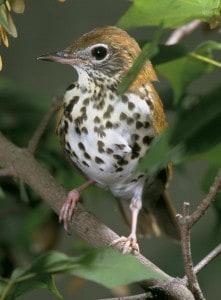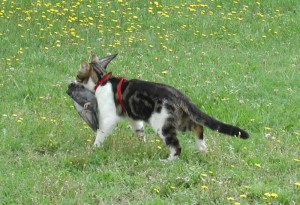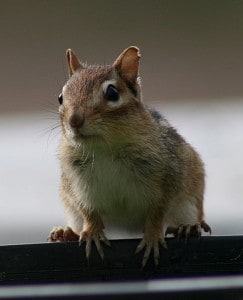Less than a year ago, we said goodbye to our 16-year-old cat, Polly. She had lived a long, healthy life, but it was still gut wrenching to finally have her put down. We loved her quirky, independent personality, how she was aware of anything that was new in the house, including the odd visit by a mouse. She was our Indoor Rodent Control Officer. Polly received lots of love and affection, but was never allowed to set foot outdoors. We still miss her greatly.
In a world where people are increasingly isolated from each other and often connect with fellow human beings more through social media than face-to-face, our relationship with pets is treasured like never before. Not only do they serve as a source of comfort but there is also something about animals that seems genuine and honest – unlike many human relationships. Dog and cat ownership has exploded in Canada and the United States, and people are going to extraordinary lengths – and expense – to keep their pets healthy and happy.
Biodiversity
But cats aren’t the only species with welfare concerns. People like me who object to free-roaming cats are often dismissed as “nature lovers”, which implies that we value the life of an individual bird or chipmunk more than a cat. This is false. What I value is biodiversity – a rich natural world where every species can thrive. I don’t lose sleep over the death of an individual robin or small mammal and, yes, the death of a family cat is clearly more traumatic. But I am concerned about what kind of world we’re leaving future generations. I want my grandchildren to have the same opportunities to enjoy nature as I have had. We are setting our children and grandchildren up to live in a much lonelier planet where a multitude of avian voices will have been forever silenced. Cats, however, are in no danger of extinction. Future generations are absolutely guaranteed to be able to enjoy the companionship of these fascinating animals.
Birds today face formidable obstacles. During migration, the list of death traps includes tall buildings, towers, power lines, windows, road traffic, pesticides, loss of feeding and resting habitat, and climate-change fueled storms that are more intense than ever before. More and more birds arrive back on their nesting grounds to find it logged over, paved over, fragmented by new roads, or converted into housing developments, shopping centres, and golf courses. Free-roaming cats, however, represent the biggest of all human-caused threats.
Cats have evolved to be indiscriminate predators and take a huge toll on species that are already plummeting in number such as many of our warblers, thrushes, flycatchers, and grassland species. Many of these birds turn up in city backyards during migration or nest around cottages and farms – places where an encounter with a cat is very likely. Cats also leave countless baby birds orphaned and almost sure to die. Even just a scratch from a cat’s claws can be enough to kill many small creatures.
Study
In a four-year study carried out by Environment Canada and published in 2013 in “Avian Conservation and Ecology”, it was found that human-related activities kill roughly 269 million birds and two million bird nests in Canada each year. Most human-related bird deaths (about 99%) are caused by the impacts of feral and pet cats, and collisions with transmission lines, buildings and vehicles. Cats appear to kill as many birds as all other sources combined – more than 100 million birds annually in Canada. Species that nest or feed on or near the ground are especially vulnerable to cat predation. They also estimate that collisions with residential and commercial buildings kill an estimated 16-42 million birds each year – mostly at house windows.
Many people feel that not allowing a cat to wander freely is cruel and that they miss out on something vitally important to their well-being. However, allowing your cat to roam around outdoors is not good for the animal, either. Outdoor cats live an average of only five to seven years while indoor cats can easily live to be 15 or more. They also run the risk of being hit by cars, attacked by other animals, being exposed to diseases like leukemia or feline AIDS, suffering at the hands of an irate neighbour, or simply getting lost. They also swell the population of stray or feral cats.
Some cat owners also deny that their tabby ever kills birds and mammals while roaming outdoors, but these are wishful thoughts. Critter-cam videos reveal that even the most docile and adorable felines routinely kill birds, chipmunks, baby rabbits, monarch butterflies and many other creatures. Feeder birds are especially easy prey. Cats often lurk in shrubbery near feeders and birdbaths awaiting a chance to pounce. Even if they are wearing a bell collar, they quickly learn to control their movements to prevent the bell from ringing.
It is also important to remember that cats have never been part of North American ecosystems. They are a non-native species that descended from the Middle Eastern wildcat (Felis silvestris lybica). Our North American birds, therefore, have never had time to evolve adaptations to avoid cat predation. It therefore makes no sense for Canadians to say that allowing a domestic cat to go outside to hunt is part of the natural order of things. It is no more natural than the zebra mussel or purple loosestrife.
Keeping tabby happy
Like dogs, cats should be allowed to explore the outdoors under supervision, such as a securely fenced yard. One local resident who contacted me had two leash-trained cats and both lived to the old age of 20. She added, “When people say ‘leashes aren’t natural for cats’, you can tell them about mine!” Some local cat owners have a window cat enclosure built onto the house, which the cat can access at will. From emails I’ve received, cats love them and use them day and night. There is a wide variety of commercially-available enclosures.
With a little patience, cats that are used to being let out can be trained to stay inside. Yes, there might be a lot of meowing at first, but the task is not impossible. Different strategies include keeping the cat indoors for gradually longer periods and making life inside fun by providing a cat tree or kitty jungle gym to climb. You might also want to give your cat a feline friend for company and entertainment.
Taking action
An attempt to address the problem of feral cats – free-roaming felines living in groups (colonies) in the wild – is already taking place in Peterborough through Operation Catnip, a very committed group of volunteers whose goal is to reduce the population and suffering of feral and abandoned cats in our community by providing TNR (Trap/Neuter/Return). Over the past three years, Operation Catnip has provided TNR to 441 cats in 115 feral cat colonies. The goal of TNR is to slowly reduce feral cat populations over time. However, scientific evidence clearly indicates it’s impossible to spay or neuter a sufficient number of cats to affect feral cat numbers at the population level. Studies have also proven that feral cats are an even greater threat to wildlife than owned cats and perpetuate problems such as transmission of disease and damage to property.
Operation Catnip also supports responsible pet ownership bylaws, which require cat owners to keep their pet on their property. The group is the impetus behind an animal welfare initiative that Peterborough city staff has prepared, which will also address the issues of feral cats and cats roaming at large. Council’s Committee of the Whole will receive the report later this spring.
Municipalities across Canada are taking action. In Calgary, for example, cats are treated in the same manner as dogs. They are licensed, provided with an identification tag but not allowed to run free. They must remain on the owner’s property. Calgary has seen a dramatic drop in cat euthanasia and a huge increase in the return of lost animals to their owner. Oakville, too, has taken steps to control free-roaming cats. Cats are no longer allowed to wander at will and must have identification, which can be a tag or microchip.
There is also the question of respect for neighbours. In addition to the aggravation of having a cut foul and dig in your garden, a free-roaming cat in the neighbourhood reduces the enjoyment of feeding birds and chipmunks. There is always the nagging fear – and sense of guilt – that you are making them more vulnerable to being killed. As a society, we have come a long way in recent years. No longer do we smoke or wear strong scents in public, let our dogs run loose, or spray our lawns with pesticide. Nor should we allow our cats to roam freely.



